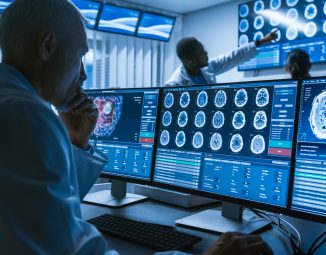Avenues to Asylum: Collaborations between Medical and Legal Professionals
On a personal basis, my experiences with attorneys have been confined to generally unpleasant but necessary conversations about money and real estate, all of which are memorialized in hourly fees. However, in my human rights work as a physician, I have valued, if not treasured, my interactions with the attorneys with whom I work.
Since 2005, I have conducted dozens of pro bono medical examinations of people who are seeking asylum in the United States for persecution or torture in their home country. I would not have the opportunity to do this work if it were not for the attorneys who represent these clients. Attorneys coming from all parts of the legal world participate: long-established New York law firms; non-profit organizations; and, solo practitioners. Most of the attorneys I encounter spend dozens of hours of pro bono effort on often complex and always emotionally and culturally challenging cases. Even those who charge their clients usually do so at reduced flat fees.
The asylum process begins when an undocumented person contacts an immigration lawyer (or organization that will provide them with representation) or an immigration official and states that he or she is seeking asylum. This person could make their announcement having just crossed the border from Mexico or walked off a plane at JFK, or is already in immigration detention or has lived in the United States for many years. In all cases, they learned, usually through word of mouth from fellow immigrants, that they can seek protection from further harm that they suffered in their country.
It is estimated that no more than a third of eligible persons ever learn of this option for safe harbor in the U.S. Of those who do, their chances for asylum are markedly dimmed if they make their claim after more than one year in this country. Of all the rules and regulations that immigration lawyers face, this “one year bar” appears to be the most frustrating. When a client has passed that one year stay, an attorney must first defend the client’s right to file for asylum. As mentioned, most refugees do not know they can seek asylum or that such action must be taken in that time frame.
Even if potential clients know about the rules for seeking asylum, they may not act. Common reasons include: a client may have post-traumatic stress disorder (“PTSD”), which can lead to immobilization, avoidance and denial of the events; a client must overcome the shame commonly associated with the persecution or torture he or she has suffered; a client, particularly one who was a member of a political group and who was tortured by government agents, could have reasonable fear of people in authority and uniform; and, a client may be afraid to tell his or her story due to fear for his or her own life and the well-being of the family he or she left behind. Experienced attorneys are aware of the many deeply personal reasons why a client may have missed the time limit, and they advocate vociferously for such clients.
Once a client has applied for asylum, the legal team begins to gather corroborating evidence to establish the credibility of the client’s claim. Since some clients carry scars or deformities that resulted from their torture, attorneys will request a medical examination to document the findings. Physicians, such as me, who have been trained as experts in the examination of persons alleged to have been victims of persecution or torture, have signed up with non-profit organizations, which connect attorneys and physicians in order to arrange an evaluation. Very often, an asylum seeker has no visible signs of physical trauma, and a mental health evaluation for depression and/or PTSD is indicated.
Besides the barriers mentioned above, the lack of readily available physicians and mental health professionals creates another barrier to achieving relief for a client. One factor contributing to the dearth of medical professionals willing to participate in pro bono work is the time commitment required. Preparing for a case can take the medical evaluator up to two hours; the country-specific cultural, political and medical customs must be learned, and the physician must review the residual signs and symptoms of the alleged torture as described in the attorney’s client affidavit. Medical evaluations, particularly if conducted through an interpreter, can last two to three hours. It may be difficult for a practitioner to free up this amount of time prior to court deadlines. Finally, the physician must create a draft affidavit based on the evaluation. The affidavit can require an additional two to six hours because it bears virtually no resemblance to a typical medical note; it requires considerable knowledge of the format required for the court, and the physician must take great care not to make broad claims that the client is credible, even though the purpose of the exam is to establish credibility. This fine line is one that physicians do not normally walk, and it can be an adjustment for the physician to provide expertise while downplaying his or her authoritative opinion.
It is here where I must express my admiration for the legal profession’s commitment to using attorney skills to perform pro bono work. I am an active advocate for physicians to be committed to pro bono work as well. Humanitarian work is of great interest to today’s medical students, but the time commitment to and financial demands of practice, whether private or hospital-based, may ultimately limit their willingness to continue humanitarian work. For older practitioners, the attitude is arguably worse. I have been met with blank stares when I have suggested that we physicians follow the example of lawyers and engage in regular pro bono work. One physician responded, “I already do pro bono work. I see Medicare and Medicaid patients.”
It is my belief that the example our legal colleagues provide us with is a valuable one and that we physicians as a group of service professionals should establish a pro bono policy ourselves. While I have no data to support this hypothesis, I believe that seeing pro bono patients such as asylum seekers could reinvigorate a physician’s approach to medicine and reduce burn out by reminding him or her of the original humanitarian reason he or she chose medicine.
Returning to the draft affidavit produced by the physician, I want to discuss another rewarding type of experience I have had with immigration attorneys. After I submit my affidavit to the attorney, we usually set up a phone call to discuss: (1) any discrepancies between my findings and those in the client’s affidavit; (2) any clarifications needed about my medical findings; and, (3) any requests that I may have (e.g., to obtain past medical records or to follow up with an ophthalmologist).
One of the most common discrepancies between affidavits is that the physician will have learned new information or discovered previously unmentioned physical findings. It is not surprising that a client might feel more comfortable mentioning certain things to a physician or that medically-oriented questions may trigger a memory that had not surfaced during prior interviews. In my experience, these omissions relate to sexual assaults, which is not surprising, and, oddly enough, to lost or broken teeth. The issue is resolved when the attorney can verify the new information with the client in a subsequent interview.
Another point of discussion is the issue of specificity of a physical finding to a reported abuse. Attorneys need to gather evidence that supports their clients’ cases, but the reality of most residual physical findings is that they are non-specific or are, at best, only consistent with the reported trauma. Certain “classic” methods of torture do produce specific long term physical sequelae, but as human rights organizations and those representing asylum seekers become better informed, methods of torture have become more sophisticated by leaving few or no residual effects without losing their efficacy at causing pain and suffering.
Once we have discussed my affidavit, I sign and have it notarized, and we wait weeks or years for the client to be seen by immigration court. About a quarter of the time, my testimony is requested. Prior to the court session, the attorney preps me with examination and cross examination questions. This has been useful and informative. Attorneys who request a physician’s testimony often ask the court for the testimony to be given over the phone; this request is usually granted and it has been a key element in recruiting physicians to this work. Without it, even fewer physicians would be able to take the time to attend court sessions and provide in person testimony on behalf of asylum seekers. As with all earlier interactions between me and the attorneys, it is a consistently cordial and collaborative process.
I have given several examples of interactions between attorneys and physicians who work on behalf of individuals seeking asylum. To have two professionals with very different training and perspectives working for the same goal is a rewarding, interesting, and educational experience. Of course, I would continue this work for clients, regardless of my interpersonal interactions with my legal colleagues, but it is all the more enjoyable when we work together for the same cause.
Mary H. White, MD is a physician evaluator in the Global Health Clinic at the Icahn School of Medicine at Mount Sinai, New York, NY. She is a graduate of Wellesley College and the Mount Sinai School of Medicine. She is board certified in internal medicine with a subspecialty in infectious diseases. She is a former attending physician at Memorial Sloan-Kettering Cancer Center and a former board member of Physicians for Human Rights and Partners in Health.



